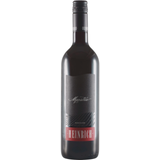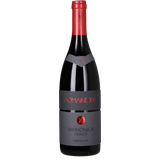Italian Wine Regions
Everything you need to know!
Italy grows a lot of wine and exports it all over the world. Italian wine-growing regions can be found from South Tyrol in the alpine foothills through central Italy to the lowest tip of Sicily. The excellent climate and numerous hours of sunshine ensure the optimum ripeness of the various grape varietals.
Italian wine-growing regions - Based on tradition and history
Italy was growing wine under the Roman Empire. Even then, the amount produced was so high that Italy caught up with the Greeks, who were previously known to be the largest winegrowers in the ancient world. Initially, the focus was on quantity. Then, in the 1960s, there was a change in the way winegrowers thought. Today, Italy produces great quality wines at numerous wineries and Italian wines are popular across the world.
20 Italian wine regions
Around 50 million hectolitres of wine are produced in Italy every year and grapes thrive on almost 700,000 hectares of vineyards. The best-known growing areas are Tuscany, Piedmont, Lombardy, Trentino/South Tyrol and Friuli.
Tuscany
Winegrowing in Tuscany flourished in the 10th and 11th centuries and was practised primarily on church land. The total area under vines in Tuscany amounts to 58,000 hectares, on which around 2000 different grape varietals for red and white wines thrive. The mild climate and many hours of sunshine are ideal for viticulture in Tuscany. The most famous Tuscan wine is Chianti Classico, which is made from at least 70% Sangiovese grapes and has become a synonym for Italian culture. Brunello, Vino Nobile di Montepulciano and Rosso di Montalcino are other famous wines from this region.
Piedmont
In Piedmont, 3 million hectolitres of wine are produced annually on a vineyard area of 62,000 hectares. Due to the climatic conditions and soil quality, winegrowers in Piedmont produce mainly red wine. One of the best-known wines is Barolo, which is in great demand internationally for its power, elegance and finesse. In addition, Barbaresco and Barbera, both of which are made from Nebbiolo grapes like Barolo, are famous wines from this region. Light and sparkling wines can also be found in Piedmont, but Italian wine-growing regions that are as sun-kissed as Piedmont offer the best conditions for strong, lively and fruity-aromatic reds like Barolo.
Friuli Venezia Giulia
Friuli has around 25,000 hectares under cultivation and is considered one of the best white wine regions in Italy. The best-known wine centres include Collio, Colli Orientali del Friuli, Isonzo and Carso, where particularly high-quality whites are produced from Chardonnay, Sauvignon Blanc, Pinot Grigio and Pinot Bianco alongside the local Friulano grape. White wines from this region are elegant and fresh, and are ideally suited to pairing with food thanks to their full-bodied character.
Lombardy
With 80,000 hectares of vineyards, Lombardy is one of the largest wine-growing regions in Italy. It is also one of the oldest. Most of the wineries are still family-owned today, but international corporations and cooperatives have also discovered and developed Lombardy as a wine-growing region. The most famous grape is the dry Soave, representative of this region and known worldwide. In Lombardy, local grape varietals play a major role and shape the majority of viticulture. White wines are in the foreground, although some reds such as light Bardolinos and Valpolicellis also thrive here.
Trentino / South Tyrol
South Tyrol has around 34,000 hectares of vineyards, with red and white wine playing an equally important role. The wines of the region are made from different grape varietals and are particularly aromatic. The best-known grapes in South Tyrol/Trentino include Riesling, Gewürztraminer, Friulano, Cabernet Sauvignon, Merlot, Teroldego and Marzemino. In this area, wine lovers will find both light, sparkling white wines and fruity reds (for example reds from Vernatsch) as well as full-bodied red wines from Lagrein grapes. The total production volume in the Trentino and South Tyrol is around 3.3 million hectolitres per year.
Due to its favourable geography, geology and climate, Italy is ideally suited to grape cultivation. Taste the regional differences and take a culinary journey through a wonderful wine-making country. One thing is clear: It would take a lifetime to become familiar with the breadth of Italian wine-growing regions! ;-)
Latest reviews
-
 4.4 (5)
4.4 (5)Domäne Wachau Wachauer Edel-Glühwein - white , 0,75 L
Bestseller- Just heat and enjoy
- Natural sugar from grape juice
- With cinnamon, star anise, cardamom and cloves
€ 7,99 (€ 10,65 / L)Delivery by January 07
-
-
 4.0 (2)
4.0 (2)Sibiliana Vini Rosso Leggeremente Appassito IGP 2023, 0,75 L
- 100% Syrah in a limited special edition
- Part of the grapes are dried beforehand
- Matured in barrique barrels
€ 14,99 (€ 19,99 / L)Delivery by January 07
-
-
 4.5 (2)
4.5 (2)Silvia Heinrich Maestra 2020, 0,75 L
- Red wine cuvee from Blaufränkisch, Merlot, Syrah
- Elegant, silky, almost feminine
- Matured in used wooden barrels
€ 21,99 (€ 29,32 / L)Sold out
-
-
 4.4 (31)
4.4 (31)Muster.Gamlitz Merlot Pannonica 2017, 0,75 L
- A strong, well-aged red
- Matured in barriques for 38 months
- The best wine from central Burgenland in Austria
€ 23,99 (€ 31,99 / L)Delivery by January 07
-
Magazine Articles:
Discover 9wines Online:
-
Austria: Free standard delivery from € 49,90
-
We operate in a
climate-conscious manner. -
Free
returns Secure payments
with SSL encryption technology







